Abstract
Seasonal distribution of nitrogen fixation by Spartina alterniflora epiphytes and in surface and soil samples was investigated in a Georgia salt marsh which was amended with sewage sludge or with glucose and/or ammonium nitrate. There was no significant difference between the rates of fixation in the unamended and sewage sludge plots. Additional perturbation experiments suggested that nitrogen addition indirectly stimulates nitrogen fixation by enhancing Spartina production and root exudation. Glucose additions, on the other hand, suppressed nitrogen fixation on a long-term basis. It is suggested that the microbial population in the soil out-competed the plants for the available nitrogen and in turn suppressed plant production and possibly root exudation. A comparison of nitrogen fixation in clipped and unclipped Spartina plots substantiated the suggestion that root exudation probably supports nitrogen fixation. Fixation in the clipped plots was significantly lower (P < 0.05) than the rates in the unclipped plots.
Full text
PDF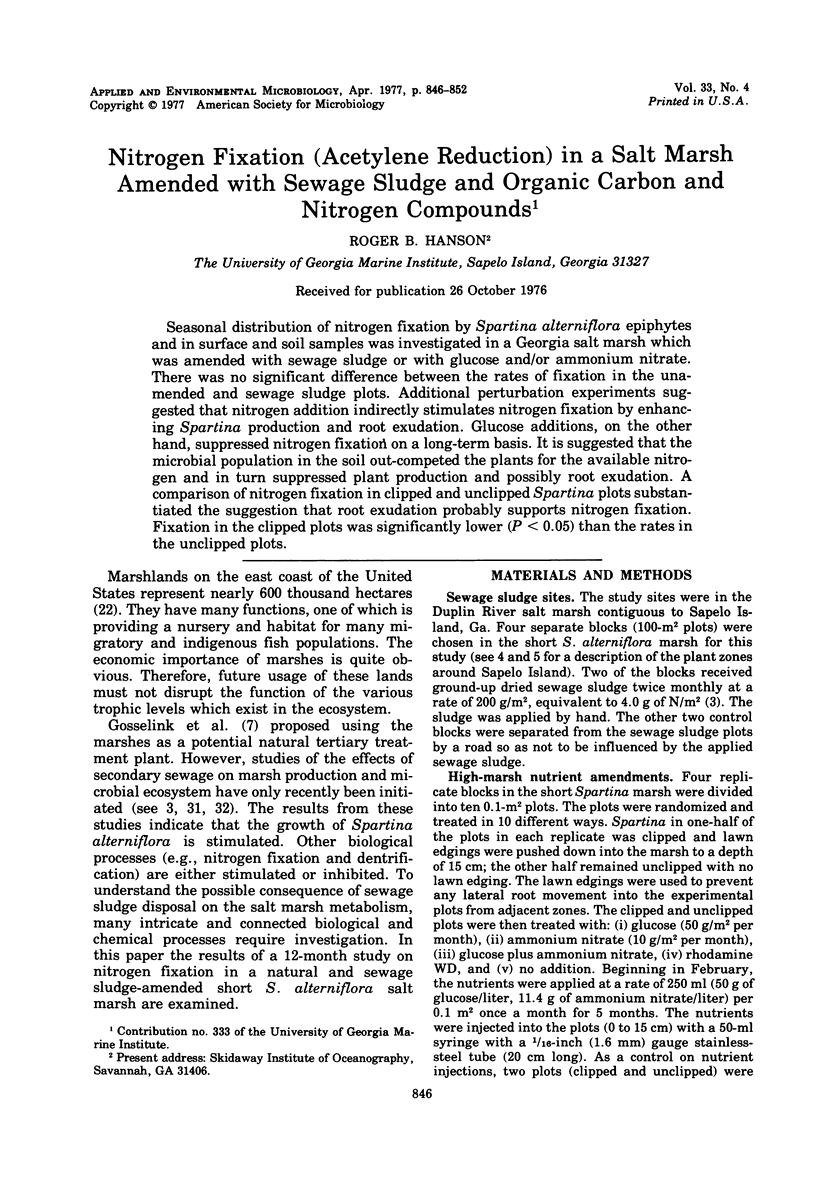
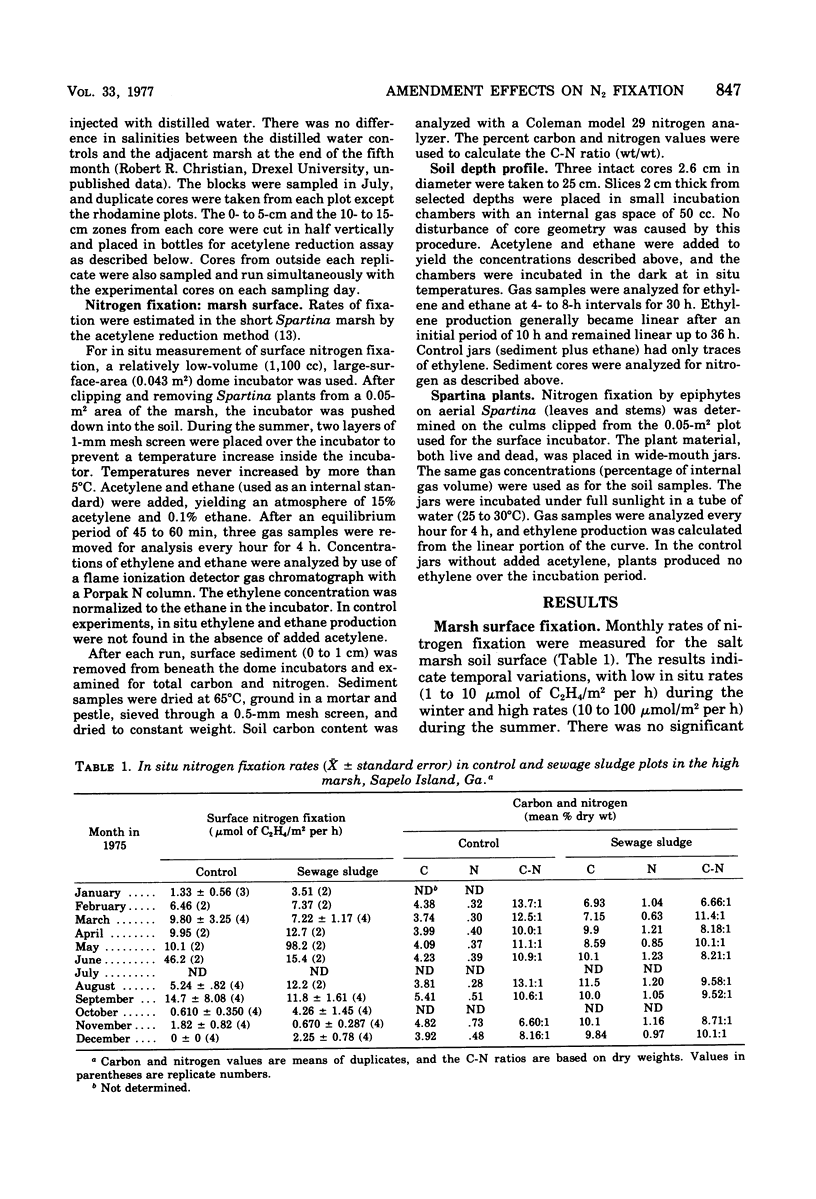
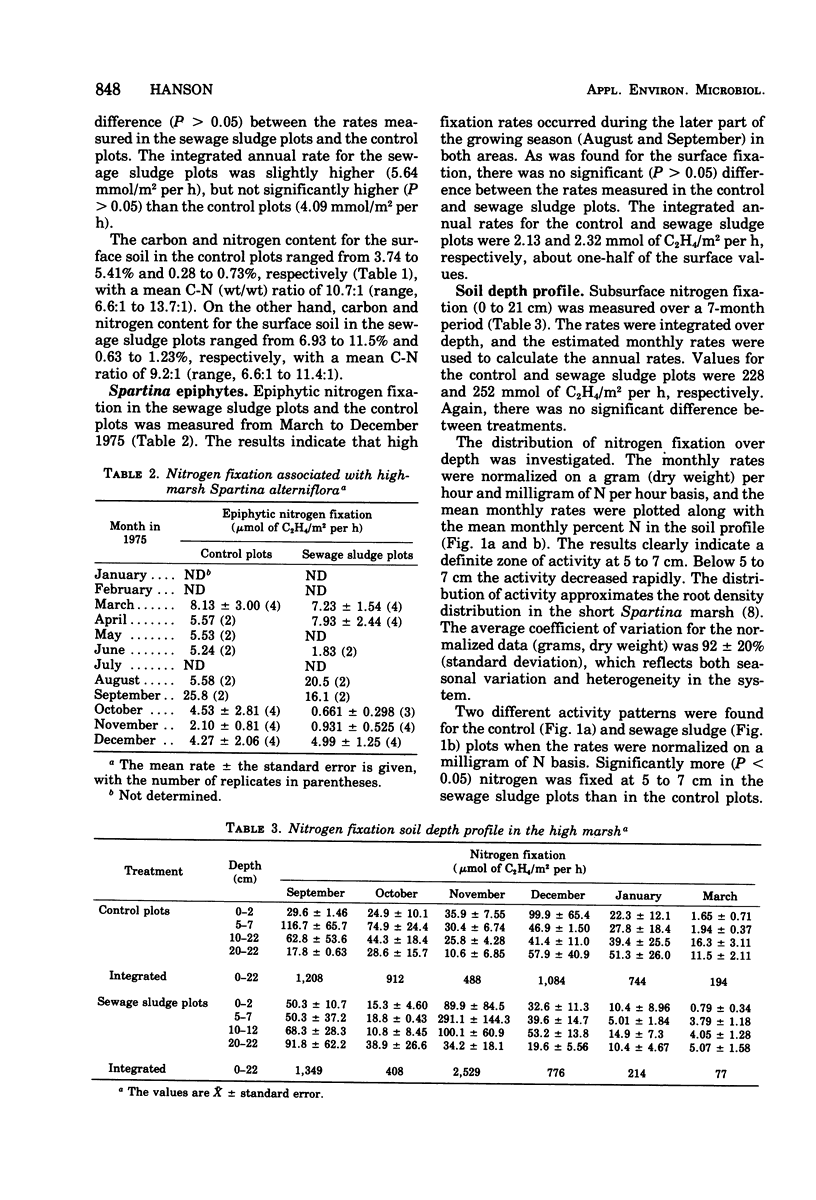
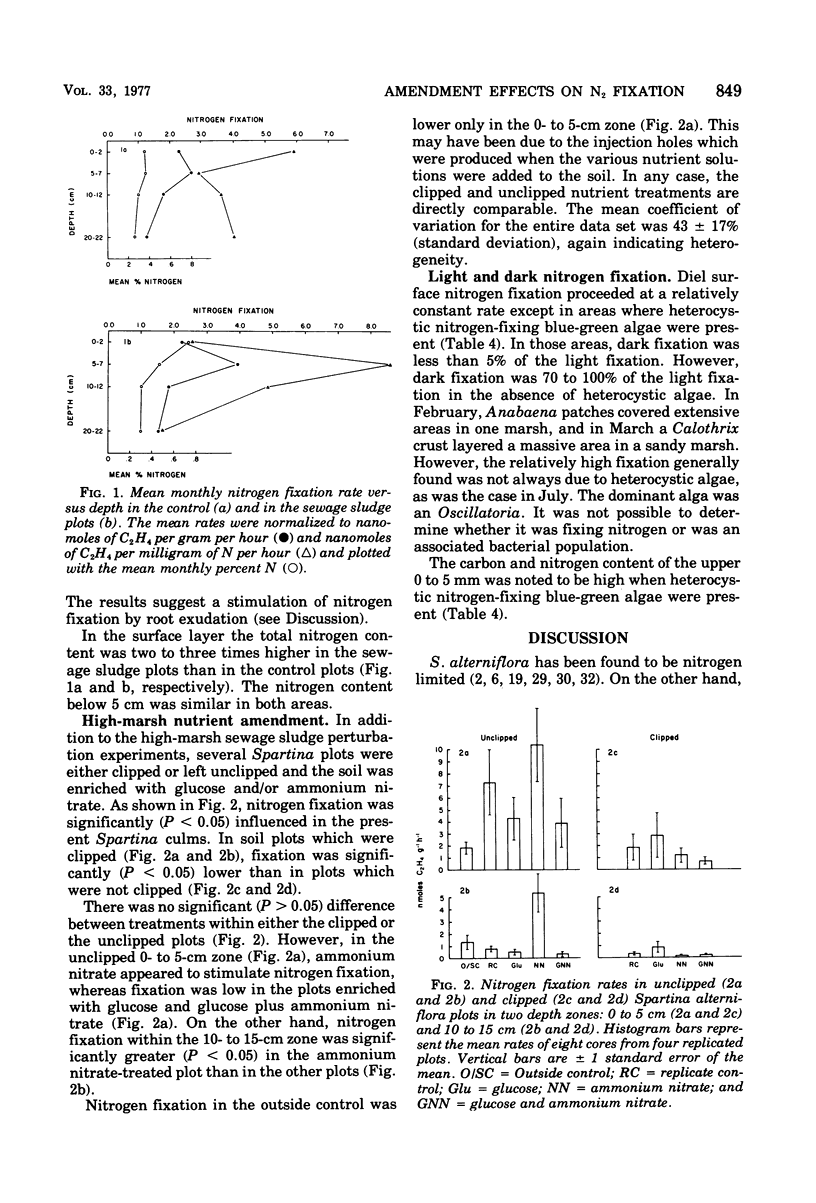
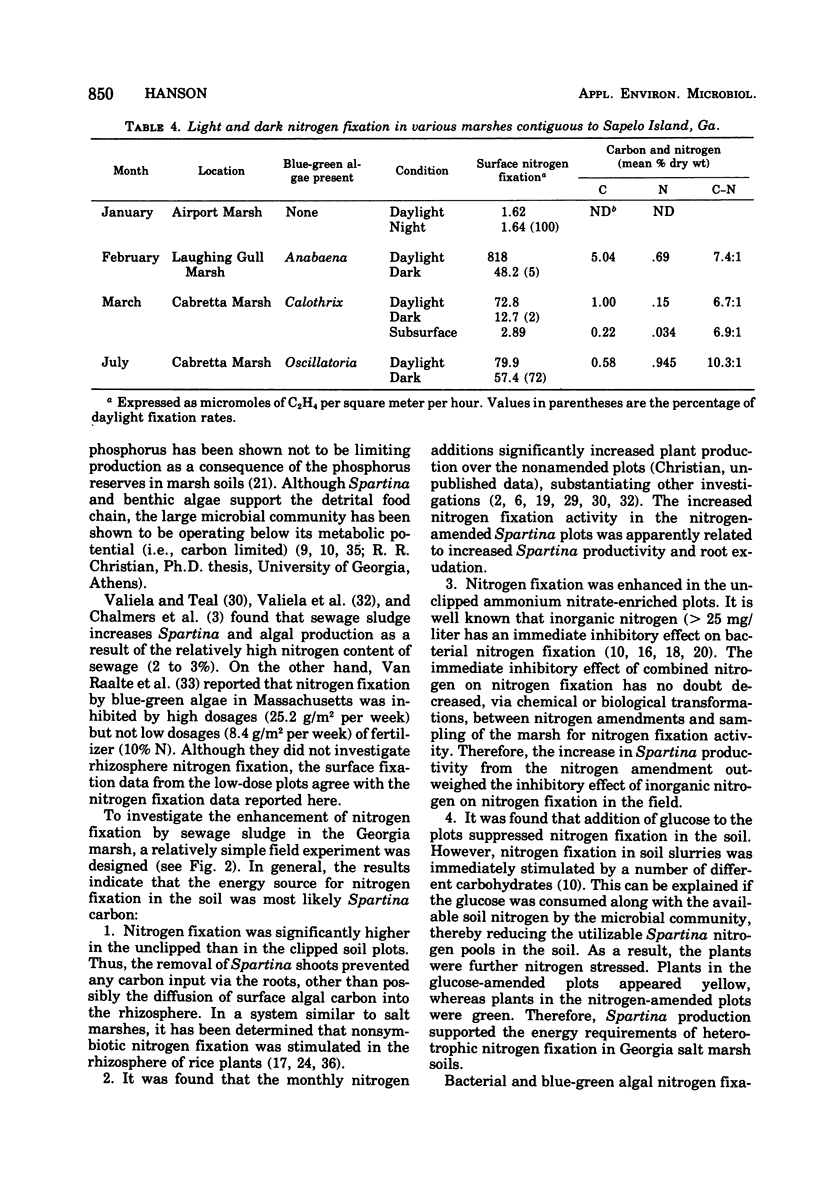
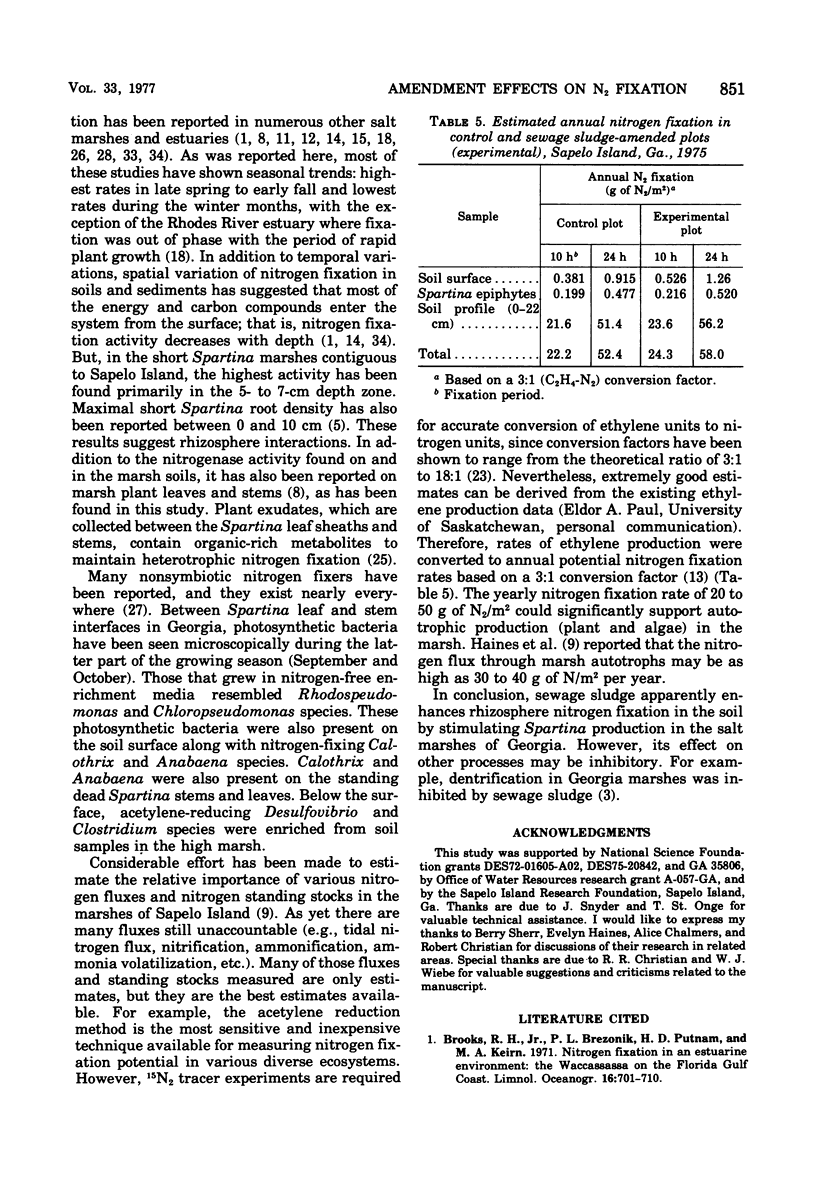

Selected References
These references are in PubMed. This may not be the complete list of references from this article.
- Hanson R. B. Comparison of Nitrogen Fixation Activity in Tall and Short Spartina alterniflora Salt Marsh Soils. Appl Environ Microbiol. 1977 Mar;33(3):596–602. doi: 10.1128/aem.33.3.596-602.1977. [DOI] [PMC free article] [PubMed] [Google Scholar]
- Hanson R. B., Gundersen K. Influence of sewage discharge on nitrogen fixation and nitrogen flux from coral reefs in Kaneohe Bay, Hawaii. Appl Environ Microbiol. 1976 Jun;31(6):942–948. doi: 10.1128/aem.31.6.942-948.1976. [DOI] [PMC free article] [PubMed] [Google Scholar]
- Marsho T. V., Burchard R. P., Fleming R. Nitrogen fixation in the Rhode River estuary of Chesapeake Bay. Can J Microbiol. 1975 Sep;21(9):1348–1356. doi: 10.1139/m75-202. [DOI] [PubMed] [Google Scholar]
- Rice W. A., Paul E. A. The acetylene reduction assay for measuring nitrogen fixation in waterlogged soil. Can J Microbiol. 1971 Aug;17(8):1049–1056. doi: 10.1139/m71-166. [DOI] [PubMed] [Google Scholar]
- Stewart W. D. Biological and ecological aspects of nitrogen fixation by free-living micro-organisms. Proc R Soc Lond B Biol Sci. 1969 Apr 1;172(1029):367–388. doi: 10.1098/rspb.1969.0027. [DOI] [PubMed] [Google Scholar]
- Wiebe W. J., Bancroft K. Use of the adenylate energy charge ratio to measure growth state of natural microbial communities. Proc Natl Acad Sci U S A. 1975 Jun;72(6):2112–2115. doi: 10.1073/pnas.72.6.2112. [DOI] [PMC free article] [PubMed] [Google Scholar]


